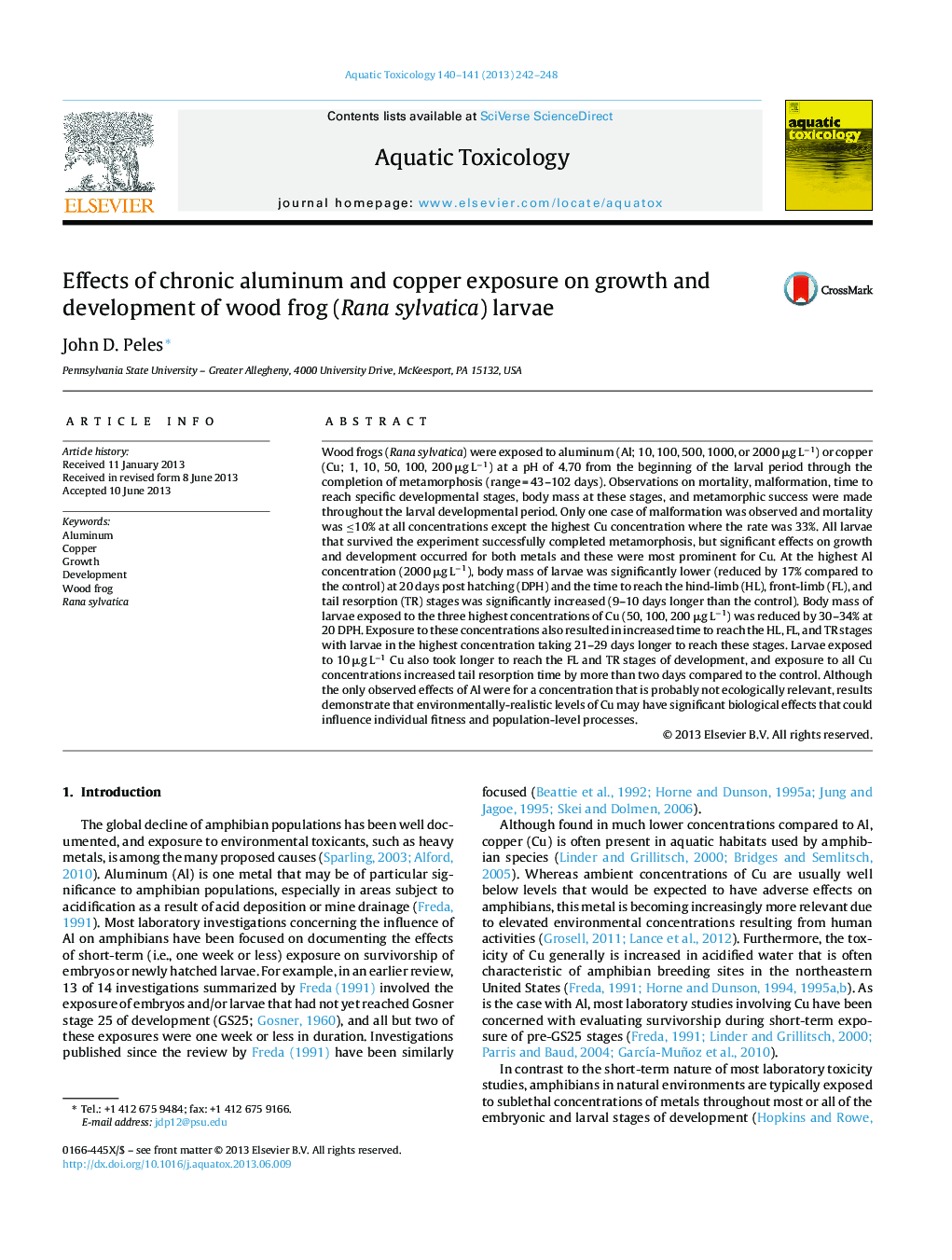| کد مقاله | کد نشریه | سال انتشار | مقاله انگلیسی | نسخه تمام متن |
|---|---|---|---|---|
| 6382525 | 1625962 | 2013 | 7 صفحه PDF | دانلود رایگان |
عنوان انگلیسی مقاله ISI
Effects of chronic aluminum and copper exposure on growth and development of wood frog (Rana sylvatica) larvae
دانلود مقاله + سفارش ترجمه
دانلود مقاله ISI انگلیسی
رایگان برای ایرانیان
کلمات کلیدی
موضوعات مرتبط
علوم زیستی و بیوفناوری
علوم کشاورزی و بیولوژیک
علوم آبزیان
پیش نمایش صفحه اول مقاله

چکیده انگلیسی
Wood frogs (Rana sylvatica) were exposed to aluminum (Al; 10, 100, 500, 1000, or 2000 μg Lâ1) or copper (Cu; 1, 10, 50, 100, 200 μg Lâ1) at a pH of 4.70 from the beginning of the larval period through the completion of metamorphosis (range = 43-102 days). Observations on mortality, malformation, time to reach specific developmental stages, body mass at these stages, and metamorphic success were made throughout the larval developmental period. Only one case of malformation was observed and mortality was â¤10% at all concentrations except the highest Cu concentration where the rate was 33%. All larvae that survived the experiment successfully completed metamorphosis, but significant effects on growth and development occurred for both metals and these were most prominent for Cu. At the highest Al concentration (2000 μg Lâ1), body mass of larvae was significantly lower (reduced by 17% compared to the control) at 20 days post hatching (DPH) and the time to reach the hind-limb (HL), front-limb (FL), and tail resorption (TR) stages was significantly increased (9-10 days longer than the control). Body mass of larvae exposed to the three highest concentrations of Cu (50, 100, 200 μg Lâ1) was reduced by 30-34% at 20 DPH. Exposure to these concentrations also resulted in increased time to reach the HL, FL, and TR stages with larvae in the highest concentration taking 21-29 days longer to reach these stages. Larvae exposed to 10 μg Lâ1 Cu also took longer to reach the FL and TR stages of development, and exposure to all Cu concentrations increased tail resorption time by more than two days compared to the control. Although the only observed effects of Al were for a concentration that is probably not ecologically relevant, results demonstrate that environmentally-realistic levels of Cu may have significant biological effects that could influence individual fitness and population-level processes.
ناشر
Database: Elsevier - ScienceDirect (ساینس دایرکت)
Journal: Aquatic Toxicology - Volumes 140â141, 15 September 2013, Pages 242-248
Journal: Aquatic Toxicology - Volumes 140â141, 15 September 2013, Pages 242-248
نویسندگان
John D. Peles,